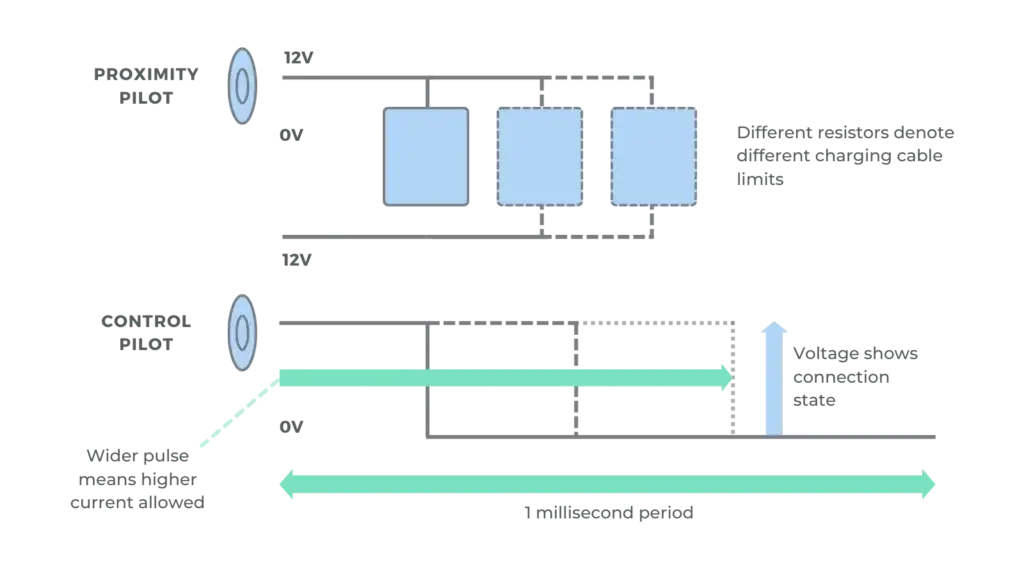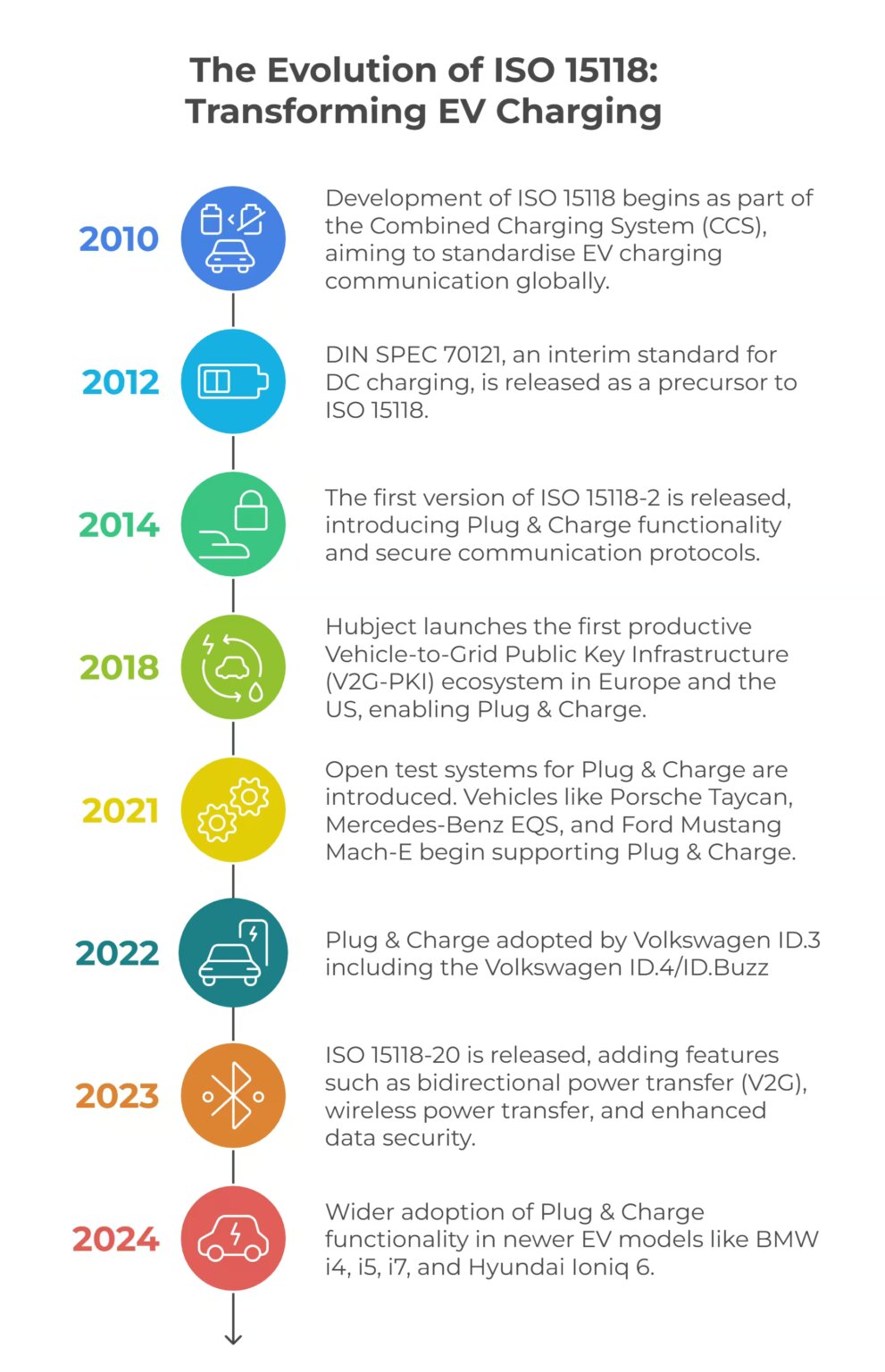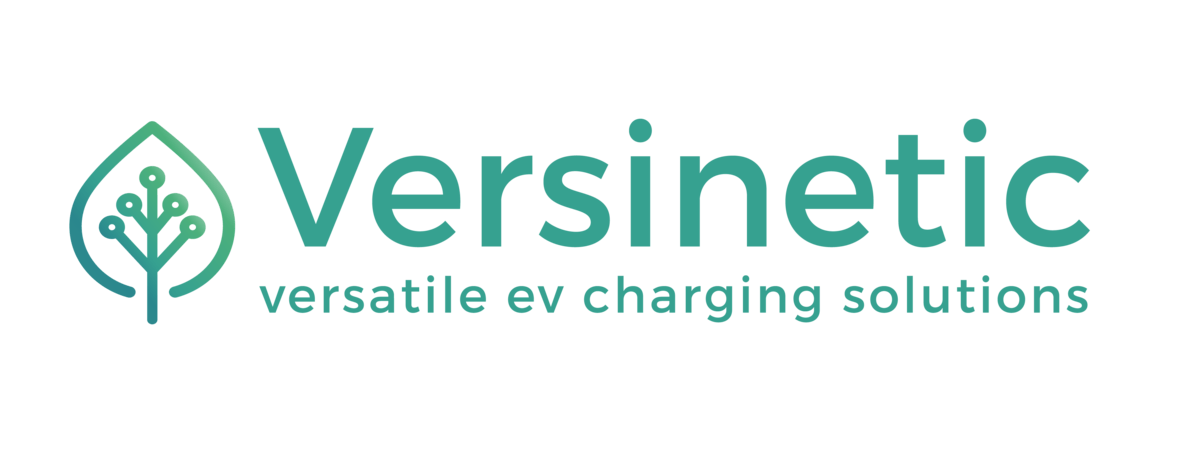SuperSmart EV Charging with ISO 15118
One of the biggest challenges to EV growth in the UK has been the complexity of public charging. We’ve passed through early phases of RFID card-based charging provider memberships (such as ChargeMaster Polar chargers) alongside simple Smartphone app membership.
Then we moved into a rapid expansion of providers, apps and charge points. We’re now moving into a period of consolidation, where the focus is on easier app use (e.g. OVO Charge Anywhere); higher charging speeds for en-route charging and even greater charge point deployment.
It’s already understood by the industry that the future of charging is to expect facilities to be ubiquitous, particularly with regard to AC destination charging.
Basically, as R&D becomes amortised, installation practices become standardised and installation rates accelerate. At the same time, charging availability not only gains acceptability, but becomes expected and yet the tolerance for a multiplicity of payment and connection procedures goes down:
Charging is just an accepted part of life, in just the same way that device charging and Wi-Fi in Cafés or public transport becomes normalised and streamlined.
However, the AC charging protocol, based on the IEC 61851/JAE 1772 standard, is far too simplistic for present needs, still less for the future. It originated at the beginning of the 21st century for the earliest modern EVs (The General Motors EV1 or Toyota RAV4 EV) and is really oriented towards hardwired implementations that may even lack any kind of software support.
Now, in the mid-2020s it’s creaking at the seams.
The question is then how to bridge the gap between increasing sophistication alongside higher industry standards and ease of use, particularly with respect to AC chargers. Fortunately, a Smart Charging by-product from the world of DC charging is coming to the rescue in the form of IEC 15118.
This is SuperSmart charging.
How Does ISO 15118 Work?
The old IEC 61851/JAE 1772 standard is a simple communications protocol between a charge point and an electric vehicle. It needs two electrical signals.
The first, called the Proximity Pilot, is a simple resistor in the charging cable which is measured by the charger to determine how much current or power the cable can take.
The second is called the “Control Pilot” and is a two-way, 12V protocol based on radio-controlled vehicles.

The EV is capable of changing the voltage depending on whether it’s plugged in or ready to charge and the charger generates a 1kHz pulse.
The width of the pulse tells the EV how much electrical current it’s allowed to take.
We can see how this provides for early adoption, but also how it represents a severe limitation on the capabilities of EV technology.
Yet the designers of DC chargers were able to overlay a far more sophisticated, high-frequency, Internet-based protocol on top of the same 1kHz Control Pilot.
This is ISO 15118.
It’s similar in some ways to the way Broadband internet access was overlaid on top of telephone voice communications.

ISO 15118 was designed to work for DC chargers and DC supporting EVs. This implies it doesn’t have anything to offer to the majority of EV charging, which will be destination, AC charging.
However, engineers realised it was possible to get ISO 15118 communications to work with AC chargers; which opened up numerous possibilities to improve charging for users and providers.
What can ISO 15118 do?
Firstly, and most importantly, ISO 15118 provides secure communication using TLS and V2G-PKI public key infrastructure. It needs to do that so that sensitive data held on the car, including its MAC address; model number; battery capacity and serial number.
Since it’s possible to obtain serial numbers (securely), it’s also possible to provide what’s called Plug and Charge capabilities, much like Tesla vehicles do with the supercharger network. This means a user can simply plug their car into a charger and after details are transferred, the internet back-end of the charger communicates with a central database so that the owner can be automatically identified. Then payments are set up without the user having to do anything.
In other words, the user’s car is also its debit/credit card! Because the convention for the back-end is based on OCPP (the Open Charge-point Protocol) compatibility across charge-point vendors and vehicle databases is ensured, guaranteeing the most seamless charging experience possible.
In addition, because charging characteristics can be read from a car, it means that charging itself can be optimised, integrating knowledge about a vehicle’s charging profile with the availability of grid power. Charging loads can then be better balanced, providing both cheaper and more widespread charging.
It goes further, ISO 15118 was designed to support V2G from the outset so vehicles, even with AC connections can take advantage of periods of high demand to provide power back to the grid. Amongst the wider applications of EVs, the role larger battery EVs can play in the net-zero transition while owners get paid for it can hardly be overstated.

Current and Future Scenarios
All DC chargers (and thus their vendors) implement ISO 15118 as it’s a standard requirement, but in the UK, only IONITY supports DC Plug & Charge and still fewer support it on AC (with Versinetic being a notable exception).
A similar scenario applies to cars. All several DC charging vehicles support ISO 15118, but Plug & Charge has only been available for cars produced after July 2022[2]. Some require a software update to be able to provide the functionality and yet others even require a hardware upgrade. It’s always worth checking with manufacturers for the level of compliance.
Furthermore, even if a car supports P&C, the number of vendors it can use depends on the number of certificates the car can install. On a Cupra Born, for example, only one vendor can be supported at a time.
In the future, like charging points themselves, SuperSmart charging with Plug & Charge will become the norm; with all users being able to take advantage of its features on all chargers.
Summary
Seamless SuperSmart charging is still in its early days, but has the potential to revolutionise the EV industry yet again.
The ideal is always for technology to make things effortless for people, but currently public charging processes in the UK (and elsewhere) can be far more complex than they need to be.
Plug & Charge will help accelerate the EV transition and ultimately, help provide critical services on the path to clean energy.
If you’re ready to implement ISO 15118 in your EV charging system, get in touch with Versinetic’s engineering consultants.

Dunstan is the founder of EV charger design consultancy, Versinetic. He is a chartered electronics engineer who has been providing design, production support and consultancy to businesses around the world for over 30 years. Dunstan graduated from Cambridge University with a degree in electronics engineering in 1992. After working in the industry for several years, he co-founded multi-award-winning electronics engineering consultancy ByteSnap Design in 2008. He then went on to launch international EV charging design consultancy Versinetic during the 2020 global lockdown. An experienced conference speaker domestically and internationally, Dunstan covers several areas of EV charger design and electronics product development, including load balancing, V2G, IoT, integrated software design and complex project management.
In his spare time, Dunstan enjoys hiking and astronomy.
Further reading
transprxtra.com
electroverse.octopus.energy/community/ev-blogs-and-guides



